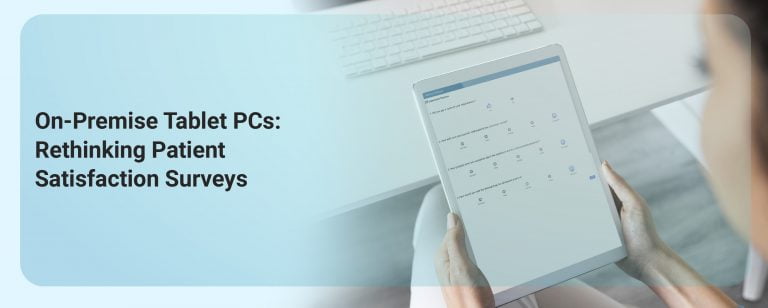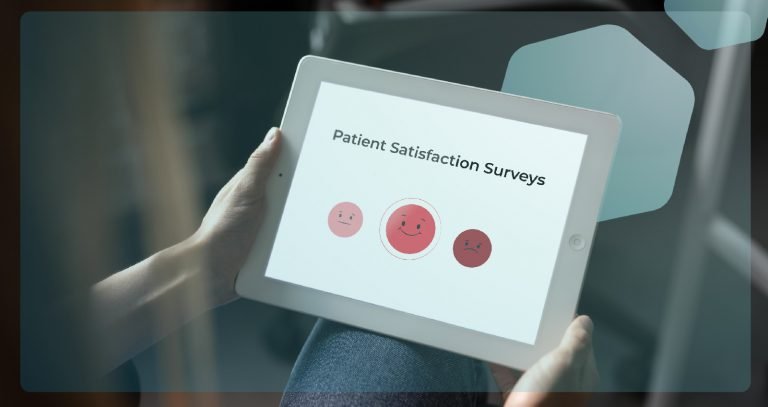
On-Premise Tablet PCs: Rethinking Patient Feedback Survey
To measure care quality at hospitals, the need for distributing patient feedback surveys is rising. So is the need for multiple channels to collect feedback from patients.
To measure care quality at hospitals, the need for distributing patient feedback surveys is rising. So is the need for multiple channels to collect feedback from patients.
Healthcare providers can choose from various channels when planning the right strategy to send patient satisfaction surveys. These channels include SMS, WhatsApp, Email, tablets, etc.
Among these channels, tab-based patient feedback surveys have some unique advantages. According to our recent analysis, tab-based feedback collection can potentially generate 8 times more responses than other modes of patient feedback.
This blog explains how tab-based surveys are different and unique from other survey methods.
What is a Tablet-based Patient Satisfaction Survey?
Tab-based patient satisfaction surveys are a viable alternative to traditional survey methods. In this method, the surveys are carried out on the tablet application for easy access. This gives hospitals the ability to survey maximum patients and encourage the patients to complete the survey in real-time.
This method can be used to capture IP and OP feedback across care centres.
How are the patient satisfaction surveys distributed on Tablet PCs?
- Tablets are an easy-to-use patient feedback collection device. Tablets are deployed strategically throughout the care center to collect feedback. Generally, a tab survey device is handed over to the patients requesting them to take the survey. This ensures patients are responding to the questionnaire within the facility when their experience is still fresh.
- Tabs can also be set up at various other touch-points of the hospital, such as labs, pharmacies, OP consultations, etc. This helps patients to complete the survey without any assistance.
- Following the survey, the tablet stores all the patient feedback securely and digitally over the cloud server. This data is easily accessible and can be viewed in real-time by the facility managers. As the data is entirely digital, it also allows providers to carry out a faster analysis of patient feedback. This way, you can save more time on analysis compared to other survey methods.
- Some advanced tablets enable capturing feedback in offline mode without any internet connectivity. They allow syncing of responses when the device is reconnected to the network. This ensures taking feedback any time, without any dependence on the WIFI.
The Efficiency of Tablet PCs for Patient Feedback Survey
On-premise tab-based surveys are an innovative approach for collecting patient feedback. Many patients are reluctant to give their feedback due to various reasons. In such cases, on-premise tablets are of great help. By using the tab survey, you can provide convenience to patients to complete feedback. This enables hospitals to increase patient satisfaction and gain a competitive advantage.
Unlike other channels, tab surveys also allow providing audio options to overcome literacy barriers. This survey method not only gets the work done but also makes the entire process efficient. Additionally, the medium makes it much easier to add/remove/modify questions as compared to paper-based ones. All these features make it an efficient channel to collect real-time patient feedback.
Benefits And Challenges of Tab-Based Patient Satisfaction Surveys
Although tab-based surveys have a host of advantages, they also have certain challenges. Let’s take a look at the benefits and limitations of tab-based surveys.

Written By | Gayatri Vernekar
Benefits
1. Provide In-Moment Patient Feedback
Patient satisfaction surveys sent remotely do not guarantee quality data. But, tabs are administered by the front office to make the patients give feedback. The hospital staff can directly carry the tab to the patients and make them answer the survey. By doing this, patients can actively participate in the survey.
2. Analytics-Friendly
According to an IBM research, 58% of healthcare high performers mentioned that business analytics and information differentiate them from others in the industry. The same report highlights that the ability to get data is the biggest barrier to the widespread adoption of analytics. Tabs provide insightful patient feedback data that can facilitate further analysis for improving patient experience and getting operational efficiencies.
3. Provide Better Quality Data
Tab-based surveys are conducted within the medical premises. Also, tabs allow asking a greater number of questions. This can help in improving the quality of responses and gives extensive flexibility in data analysis for hospitals.
4. Help Maintain Data Security
Following surveys, all the captured patient feedback is stored electronically, with access given only to authorized personnel. This ensures the security of sensitive data, mitigating the risk of data loss. On the other hand, paper-based surveys can get misplaced.
5. Drive a Higher Number of Responses
Tab-based patient satisfaction surveys can collect patient feedback in real-time and provide convenience to patients. Thus, this channel has the potential to outperform other means of survey methods in terms of feasibility and response rate.
6. Improve Hospital’s Brand Image
Paper-based surveys are a cumbersome activity and can annoy patients. Whereas tab-based surveys are relatively easy for patients to fill. The use of tabs for feedback may show that the hospital is sophisticated and thus help in improving its brand image.
Challenges
1. Initial Investment
There’s an initial investment in a tablet, which may make it prohibitive as compared to other methods of feedback. However, these days tablets are available at a low cost and can be used by staff even for other administrative purposes beyond feedback.
2. Basic Maintenance
Tablets require some form of maintenance as they need to be recharged, similar to phones, laptops, and other rechargeable devices.
3. Technical Barriers
Patients who are not familiar with technology may find it hard to give feedback on tablets.
Ultimately, on-premise tab surveys are powerful data collection tools that every hospital should use to track their patient feedback. This method improves the efficiency of conducting patient satisfaction surveys and analyzing the responses. Plus, its potential to capture real-time patient feedback gives you deeper insights to make informed business decisions.
Are you interested in finding out more about Tablet-Based Patient Satisfaction Surveys? Click here to know more.




